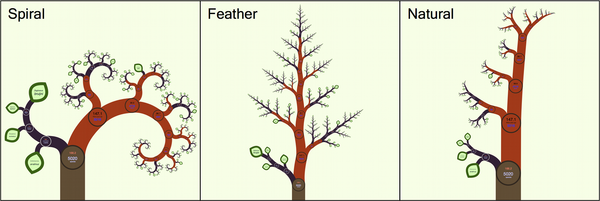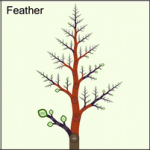Visualising the tree of life is a challenge for even the most artistically attuned in the scientific community. The problem is the sheer number of species that we need to represent, literally millions. But I think the latest attempt meets the challenge. The developers of OneZoom, the name of the new approach, argue that we need to escape the “paper paradigm”. We should instead make full use of the benefits that digital interactive displays grant us. Worrying that our efforts won’t translate to the printed page is an exercise in Luddism.
So, why is OneZoom so successful? The display takes its cues from Google Earth, the virtual globe, but whereas in Google Earth you move from continents to countries in OneZoom you zoom in from class to species. It’s even better than that because the whole tree has a fractal geometry, the self similar patterns you can see with real trees, which allows for an intuitive zoom function. One critique is that the fractal geometry ends up displaying the groups that diverged earlier (e.g. monotremes) as larger than the more recent groups (e.g. placentals), suggesting some significance when there is none. So far only the mammals are on show but it’s early days yet.
There are a number of other really useful features like the ability to play the evolution of the whole tree backwards and forwards in time so you can see exactly when a given species, genus or what have you, diverged. The potential for science communication as well as research is great. But enough of me talking about what is best seen and check it out for yourself. The details of OneZoom are available in PLOS Biology.
Author
Adam Kane: kanead[at]tcd.ie
Photo Credit
Rosindell J, Harmon LJ (2012) OneZoom: A Fractal Explorer for the Tree of Life. PLoS Biol 10(10): e1001406. doi:10.1371/journal.pbio.1001406


